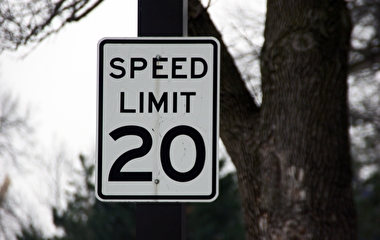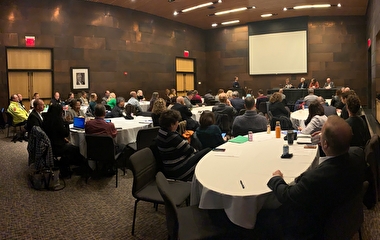
Throughout the Twin Cities, a vast network of traffic data detectors is collecting detailed traffic data every 30 seconds. The information these Minnesota Department of Transportation (MnDOT) traffic detectors collect—such as the number of vehicles in each lane and the speed those vehicles are traveling—has many potential uses in both the private and public sectors. However, the data has not been readily available to the public in a simple, up-to-date way.
“Part of my work is helping MnDOT manage the massive amount of data generated by these collectors, and my goal was to create an easy-to-use tool for anybody interested in this data to access the information they wanted directly and quickly,” says Taek Kwon, a professor with the University of Minnesota Duluth’s Department of Electrical Engineering. “Now, even users without much knowledge of traffic data can easily access all Twin Cities and Rochester traffic data using my new free software package called getTraf_data.”
According to Kwon, there are countless ways users could leverage the information provided through this new tool: A business can find out how many vehicles travel on the off-ramp near a potential location on a daily, weekly, or monthly basis; law enforcement can check to see where and when vehicles are traveling at high speeds; reporters can determine how a previous day’s news events impacted traffic; and researchers can find the data they need for their studies and projects.
“I receive traffic data requests from all over the world, and the type of requests I receive is extremely varied,” Kwon says. “With this new tool, many of these data requests can be filled more quickly and with more up-to-date information in a self-service way, as well as opening this data up to new audiences who may not have used it in the past.”
The traffic data software can be downloaded to a Windows computer for free (no registration needed), and a detailed user’s guide is available to explain the process of generating reports with getTraf_data. In short, users look up the traffic sensor ID numbers they are interested in viewing data for, input those sensor numbers as comma-separated values in a search box, select their desired date ranges, and indicate which data points they wish to view. The reports are generated in a simple Excel format; available data points include traffic volumes, traffic occupancies, and traffic speeds.
Kwon created this free resource in conjunction with his research work for MnDOT. He also notes that the computing equipment used to create the software was purchased with funding he received as a CTS Scholar. He hopes that software users will provide input, and he plans to use that feedback to further improve the getTraf_data software tool in the future.
Writer: Megan Tsai


